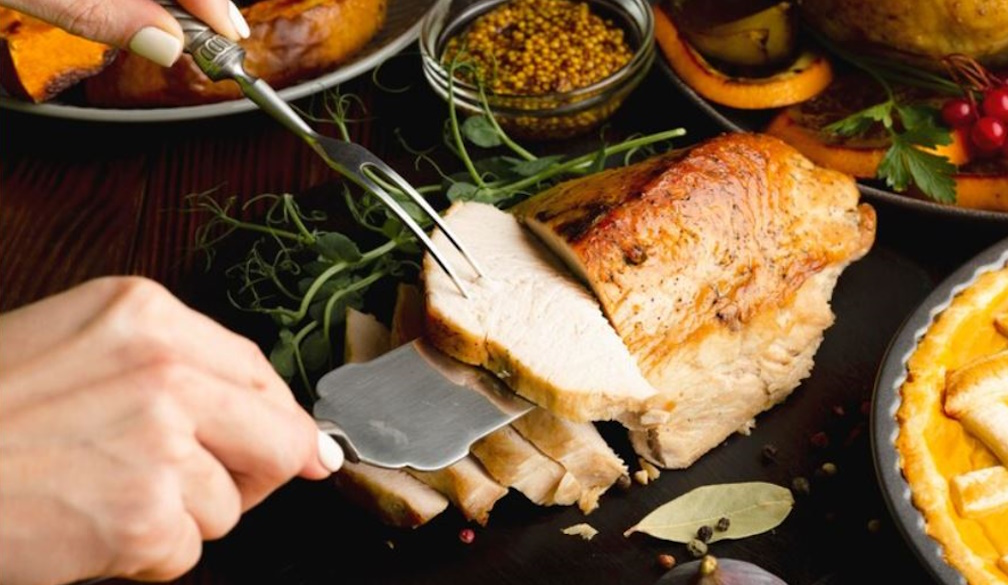Hog Roast vs. Spit Roast: Key Differences and When to Choose Each

Choosing between a hog roast and a spit roast can shape the flavour, timing and look of your event. Both rely on slow rotation over heat, but they deliver different experiences on the plate and around the serving station. This guide explains the key differences, what each style suits best, and how to match the method to your venue, guest list and budget.
Hog Roast
A whole pig cooks on a rotisserie until the skin crackles and the meat turns tender enough to pull or carve. The appeal is theatre and tradition: a single centrepiece, carved to order, with crisp crackling.
Spit Roast
“Spit roast” describes the technique rather than a specific animal. Caterers mount one or more cuts on a rotating skewer, lamb legs, beef roasts, whole chickens, or mixed meats, and cook them evenly for slicing. You gain variety, faster service and easier portion control.
If your priority is dramatic presentation and crackling, the hog roast leads. If you want flexibility and speed, the spit roast is often the better fit.
Equipment and Heat Source
Both methods can run on charcoal, wood or gas. Charcoal gives a distinct, smoky flavour but needs more ash management and airflow. Gas offers steadier temperatures and simpler compliance for urban venues. For outdoor events that value spectacle, bbq spit roast catering combines the visual appeal of live fire with the reliability of commercial grills and rotisseries.
Space matters. A whole hog requires a larger footprint, solid ground and safe barriers. A multi-spit unit can be more compact, and some models fit under approved marquees. Always check venue rules on flames, smoke and placement before you book.
Meat, Menus, and Dietary Mix
A hog roast is, by definition, pork. It suits crowds who love crackling and rich, pulled pork with classic sides. A spit roast lets you tailor the menu: lamb with rosemary, beef for those who prefer red meat, and chicken for milder tastes. You can run two or three meats at once, which helps with dietary variety without running a second kitchen. This flexibility is a strong reason many organisers choose spitroast catering for mixed-age or corporate events.
Texture and Flavour Outcomes
Whole hogs shine when you want three textures on one plate: brittle crackling, juicy carved slices and soft, shredded meat from slower-cooked sections. Spit roasts excel at even doneness and clean slices across multiple proteins. Marinades and bastes stick well to rotating cuts, so you can offer distinct flavour profiles—garlic and herb for lamb, a pepper rub for beef, lemon and thyme for chicken—without cross-over.
Capacity, Timing, and Planning
Cook time depends on weight, heat and weather. A medium whole pig can take many hours to reach safe internal temperature and develop proper crackling. Spit-roasted cuts finish on staggered timelines, letting you start serving earlier and sustain the buffet. Ask your caterer for a clear run sheet that includes bump-in, heat-up, serving windows and pack-down. Reputable spit roast caterers will also specify resting times, which protect tenderness and carving quality.
Logistics and Venue Considerations
Think through access, ventilation, prevailing wind, and a safe path from cooking area to buffet. Some inner-city sites restrict smoke or open flames, which may tilt the decision towards gas rotisseries. If your function sits under tighter urban guidelines, a provider experienced in spit roast catering Sydney can advise on local requirements, wet-weather plans and power needs.
Cost Factors
A hog roast concentrates cost into one premium item and a specialist rig, with potential savings in simplicity. A spit roast can be cost-effective when you need variety without over-catering; you choose exact weights for each meat and add more of what your group prefers. Budget also shifts with sides, staffing levels, travel, and whether the team supplies marquees, chafers and serving gear.
Food Safety and Quality Control
Slow cookery must still meet safe temperature standards from prep to service. Confirm that your provider logs temperatures, rests meats correctly, and protects the carving station from crowd contact. Ask about backup fuel and wet-weather cover. Providers offering spit roast catering at scale should volunteer this detail without prompting.
When to Choose a Hog Roast
- You want a single, dramatic centrepiece with crackling and carved plates.
- Your crowd prefers pork and classic sides, and you have a longer service window.
- You have ample outdoor space and a venue comfortable with charcoal or wood.
When to choose a spit roast
- You need menu flexibility across lamb, beef and chicken, with vegetarian and gluten-free sides.
- Service speed matters because of speeches, staging or session times.
- Space or venue rules favour compact rigs, clean operation and easy airflow management.
Final Thought
Both methods can deliver tender meat, a generous buffet and a memorable atmosphere. Let the venue, timeline and guest mix guide you. If you need practical detail on rigs, menus and compliance, reputable providers of spit roast catering near me searches can map out options that fit your site.
